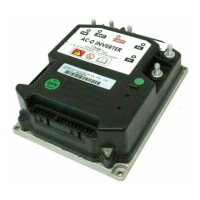Page - 10/100 AE0ZP0EC - AC-0 SSL SENSORED - User Manual
4 INSTALLATION HINTS
In the description of these installation suggestions you will find some boxes of
different colours, they mean:
4 These are information useful for anyone is working on the installation, or a
deeper examination of the content
U These are Warning boxes, they describe:
- operations that can lead to a failure of the electronic device or can be
dangerous or harmful for the operator;
- items which are important to guarantee system performance and safety
4.1 Material overview
Before to start it is necessary to have the required material for a correct
installation. Otherwise a wrong choice of cables or other parts could lead to
failures/ misbehaviour/ bad performances.
4.1.1 Connection cables
For the auxiliary circuits, use cables of 0.5 mm² section.
For power connections to the motor and to the battery, use cables having section
of 16 mm² (as a minimum).
For the optimum inverter performance, the cables to the battery should be run
side by side and be as short as possible.
4.1.2 Contactors
Usually a main contactor is adopted to connect and cut off the battery to the
controller. Depending on the setting of a parameter (see AUX VOLTAGE #1
option in “Set options” submenu):
- the output which drives the main contactor coil is on/off (the coil is driven with
the full battery voltage).
- the output which drives the main contactor coil is switched at high frequency
(1 kHz) with a programmable duty cycle; this feature is useful to decrease the
power dissipation of the contactor coil.
The EN1175 states the main Contactor is not mandatory (under proper
conditions); anyway it is useful to protect the inverter against reverse battery
polarity and to cut off the battery from the power mosfets when a failure in the
three phase bridge occurs.
4.1.3 Fuses
- Use a 6.3-10 A Fuse for protection of the auxiliary circuits.
- For protection of the power unit, use a 120-150 A fuse in the Battery Positive
connection. For special applications or requirements these values can be
reduced.
- For Safety reasons, we recommend the use of protected fuses in order to
prevent the spread of fused particles should the fuse blow.

